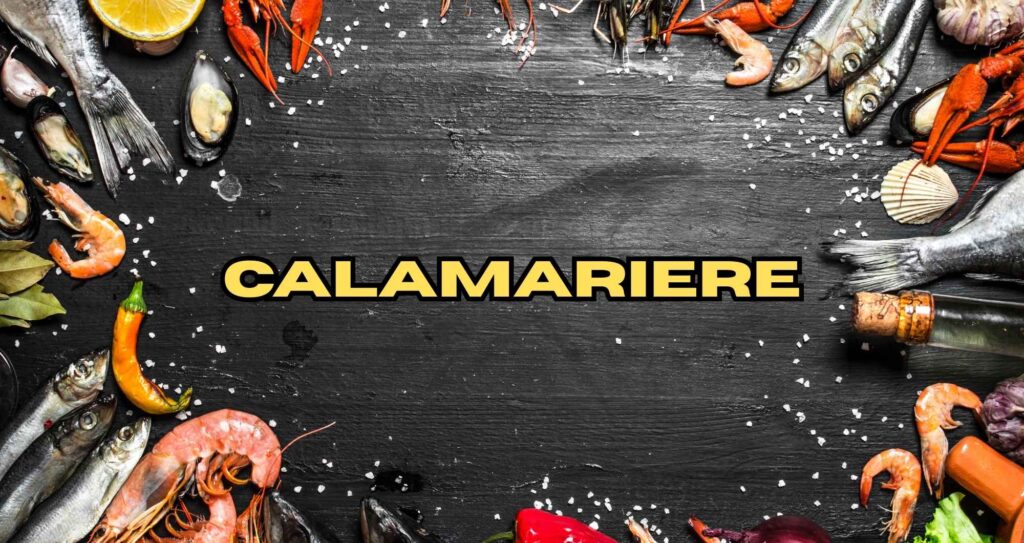Calamariere is a dish that brings the ocean’s flavors straight to your table, captivating taste buds with its tender texture and rich taste. This delightful seafood delicacy has become a favorite for many food enthusiasts around the world. Whether you’re looking to impress dinner guests or simply indulge in a comforting meal at home, calamariere is sure to satisfy your cravings.
In this blog post, we’ll dive into the history of this beloved dish and explore tantalizing recipes designed for both novice cooks and seasoned chefs. Along the way, you’ll discover tips that elevate your cooking game and serving suggestions that will make your meals unforgettable. Get ready to embark on a culinary adventure filled with variations from different cultures—all highlighting what makes calamariere so special!
History and Origin of Calamariere
Calamariere has deep roots in Mediterranean cuisine. This dish, primarily featuring squid, reflects the region’s rich fishing heritage and culinary traditions. As seafaring communities thrived, they discovered various ways to prepare squid, from simple grilling to more elaborate recipes.
The name “calamari” derives from the Italian word for squid. Over time, these recipes spread across coastal towns in Italy and beyond. Each culture adapted calamariere according to local ingredients and tastes.
In Greece, it’s often served with a squeeze of lemon and fresh herbs. Spain prefers its version fried or stuffed with flavorful fillings like cheese or chorizo.
These variations highlight how calamariere transcends borders while maintaining its essence as a beloved seafood dish cherished by many cultures throughout history. The ongoing popularity of calamariere speaks volumes about humanity’s connection to the sea and our desire to share delightful flavors across generations.
Calamariere Recipe: Step-by-Step Guide
To create a flavorful calamariere, start by gathering fresh calamari. Clean and cut it into rings if necessary.
Next, prepare your batter. Combine flour, cornstarch, and seasoning in a bowl for that perfect crunch. You can add paprika or garlic powder for extra flavor.
Heat oil in a deep pan until it reaches 350°F (175°C). This is the magic temperature for achieving golden-brown perfection.
Dip each calamari ring into the batter before gently placing them in the hot oil. Fry them in small batches to avoid overcrowding.
Cook for about two to three minutes until they are crispy and lightly browned. Remove from the oil and drain on paper towels to absorb excess grease.
Serve immediately while hot with lemon wedges and marinara sauce on the side for dipping!
Tips for Cooking Perfect Calamariere
To achieve perfect calamariere, start with fresh ingredients. Always choose squid that looks glossy and is free from any off-putting smells.
Next, the cooking time is crucial. Calamari can become rubbery if overcooked. Aim for a quick sauté or fry for about 2 to 3 minutes until they turn golden brown.
Marinating your calamari before cooking adds flavor depth. A simple mix of lemon juice, garlic, and olive oil works wonders.
When frying, use high-quality oil and ensure it’s hot enough before adding the squid. This prevents them from absorbing too much oil while creating a crispy texture.
Keep an eye on portion sizes; serving smaller quantities allows even cooking and enhances presentation on the plate. Each piece should be appetizingly arranged for a visually appealing dish.
Serving Suggestions and Pairings
When it comes to serving calamariere, presentation matters. A vibrant platter can elevate the dish. Consider garnishing with fresh herbs like parsley or basil for a pop of color.
Pairing sides is equally important. Light salads work beautifully alongside calamariere, offering a refreshing contrast. Think arugula with lemon vinaigrette or a classic Caesar salad.
For beverages, white wines shine brightly here. A crisp Sauvignon Blanc complements the flavors perfectly. Alternatively, go for an ice-cold beer if you prefer something more casual.
Don’t forget about dipping sauces! Tzatziki and marinara are popular choices that add depth to every bite. For those adventurous souls, try a spicy aioli for an unexpected twist.
Enhancing your dining experience with thoughtful pairings can turn a simple meal into something memorable. Embrace creativity as you explore different combinations that suit your taste buds!
Variations of Calamariere from Different Cultures
Calamariere is celebrated in various cultures, each adding a unique twist to this delightful dish. In Italy, you might find it prepared with a rich tomato sauce, topped with olives and capers for an extra punch of flavor.
In Greece, calamariere often comes stuffed with feta cheese and herbs like dill or oregano. This version reflects the Mediterranean love for bold flavors and fresh ingredients.
Meanwhile, Asian cultures have their own take on calamariere too. In Japan, it’s common to see calamari served as tempura—lightly battered and fried until crispy, paired with dipping sauces that enhance the umami taste.
Latin American variations may incorporate spices such as cumin or chili powder for a vibrant kick. Each culture brings its essence to the table, showcasing how versatile calamariere truly is across the globe.
How to Choose the Best Ingredients for Calamariere
Choosing the right ingredients for calamariere can elevate your dish from good to extraordinary. Start with fresh squid. Look for shiny, translucent bodies without any discoloration. The fresher the squid, the better the flavor.
Next, consider your breading options. Use fine breadcrumbs or panko for a satisfying crunch. If you’re feeling adventurous, try flavored breadcrumbs for added depth.
Don’t forget about spices and seasonings! Fresh herbs like parsley or basil can brighten up your calamariere significantly. Lemon zest adds a zesty kick that complements seafood beautifully.
Choose high-quality oil for frying. Olive oil is classic but vegetable oils have higher smoke points if you prefer deep-frying methods. Quality ingredients truly make all the difference in achieving an irresistible calamariere experience!
Conclusion
Calamariere is more than just a dish; it’s an experience that brings together flavors, cultures, and history. With its roots tracing back to Mediterranean traditions, it has evolved into a beloved meal enjoyed worldwide. Whether you’re preparing it for a casual family dinner or an elegant gathering, mastering the art of calamariere can elevate your culinary skills.
The step-by-step recipe provided simplifies the cooking process while allowing room for creativity in presentation and flavoring. Remember to take note of essential tips for achieving that perfect texture—tender yet crisp. Experiment with various serving suggestions and pairings to find what resonates best with your taste buds.
Diving into different cultural variations reveals the versatility of calamariere, showcasing how diverse ingredients can create unique dishes inspired by local cuisines. Selecting high-quality ingredients will set the foundation for an irresistible plate every time you cook this delightful seafood classic.
So gather your ingredients and embark on a flavorful journey with calamariere—it’s sure to become a favorite at your table!






